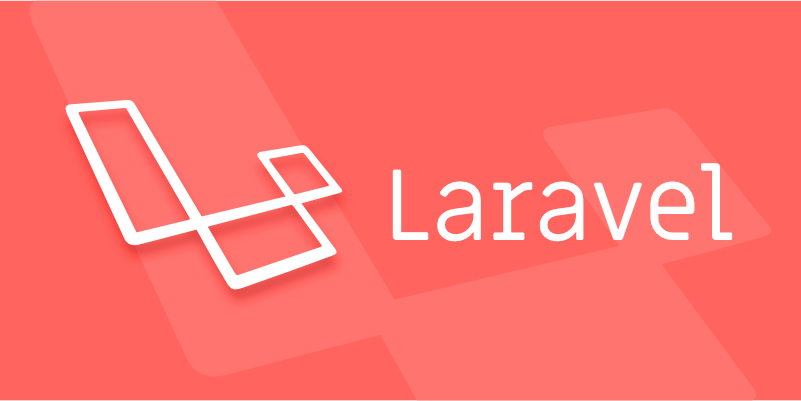Leveraging Resource Controllers for RESTful Development in Laravel
Jul 06, 2025 am 01:22 AMResource Controllers is an efficient tool in Laravel for building RESTful interfaces. It handles common HTTP request actions through predefined methods and customizes routing and middleware. 1. Use Route::resource() to quickly register standard CRUD routes; 2. Control enabled routes through only or except; 3. Use names to customize route names; 4. Add middleware to enable access control; 5. It is recommended to extract verification and business logic to keep the controller single responsibilities.

In Laravel development, Resource Controllers is a very practical tool when building RESTful interfaces. They not only reduce the writing of duplicate code, but also make routing and controller logic clearer and more standardized. If you are developing a standard CRUD application, using Resource Controllers can save a lot of time.

What is a Resource Controller?
Laravel's Resource Controller provides a predefined set of methods to handle common HTTP request actions (such as index, create, store, show, edit, update, and destroy). The standard routes corresponding to these methods can be automatically registered through Route::resource() .

For example, if you have a blog system that has Post resources, you only need to run an Artisan command:
php artisan make:controller PostController --resource
This generates a controller with standard methods, each method corresponding to a resource operation. This approach allows you to follow RESTful design principles from the very beginning.

How to use Resource Controllers efficiently
Only the required routes are enabled
Sometimes you don't need all seven routes. For example, a resource is only allowed to be viewed and created, and does not require editing or deletion. At this time, you can use only or except to restrict the registered routes:
Route::resource('posts', PostController::class)->only(['index', 'show', 'create', 'store']);
Or eliminate actions you don't want:
Route::resource('posts', PostController::class)->except(['destroy']);
Doing so will make the routing cleaner and avoid exposing unnecessary interfaces.
Custom method name and route name
By default, the method and route name of the Resource Controller are fixed. But you can customize them to suit your business needs. For example:
Route::resource('photos', PhotoController::class)->names([
'create' => 'photos.build',
'store' => 'photos.save'
]);This can be helpful when you need to namespace division or permission control for certain operations.
Use middleware to control access rights
It is very common to add middleware to the Resource Controller. You can specify it directly in the route:
Route::resource('posts', PostController::class)->middleware('auth');
You can also add it in the controller constructor:
public function __construct()
{
$this->middleware('auth')->except(['index', 'show']);
}This fine-grained permission control method is very suitable for projects in multi-role systems.
Tips: Organize controller logic rationally
Although Resource Controller provides a unified structure, in actual development you will find that some methods may become bloated, especially when the business logic is complex. At this time, it is recommended:
- Extract data verification into Form Requests
- Encapsulate core logic using Service classes
- Maintain a single responsibility in the controller, focusing on the processing of requests and responses
For example, don't write too many database operations in the store method, but call a PostService::create() method to do the actual work.
Basically that's it. Resource Controllers is one of the basic tools for Laravel to build RESTful APIs. Using them well can significantly improve development efficiency. Mastering how it is used and combining some good architectural practices will make your project easier to maintain.
The above is the detailed content of Leveraging Resource Controllers for RESTful Development in Laravel. For more information, please follow other related articles on the PHP Chinese website!

Hot AI Tools

Undress AI Tool
Undress images for free

Undresser.AI Undress
AI-powered app for creating realistic nude photos

AI Clothes Remover
Online AI tool for removing clothes from photos.

Clothoff.io
AI clothes remover

Video Face Swap
Swap faces in any video effortlessly with our completely free AI face swap tool!

Hot Article

Hot Tools

Notepad++7.3.1
Easy-to-use and free code editor

SublimeText3 Chinese version
Chinese version, very easy to use

Zend Studio 13.0.1
Powerful PHP integrated development environment

Dreamweaver CS6
Visual web development tools

SublimeText3 Mac version
God-level code editing software (SublimeText3)
 Working with pivot tables in Laravel Many-to-Many relationships
Jul 07, 2025 am 01:06 AM
Working with pivot tables in Laravel Many-to-Many relationships
Jul 07, 2025 am 01:06 AM
ToworkeffectivelywithpivottablesinLaravel,firstaccesspivotdatausingwithPivot()orwithTimestamps(),thenupdateentrieswithupdateExistingPivot(),managerelationshipsviadetach()andsync(),andusecustompivotmodelswhenneeded.1.UsewithPivot()toincludespecificcol
 Sending different types of notifications with Laravel
Jul 06, 2025 am 12:52 AM
Sending different types of notifications with Laravel
Jul 06, 2025 am 12:52 AM
Laravelprovidesacleanandflexiblewaytosendnotificationsviamultiplechannelslikeemail,SMS,in-appalerts,andpushnotifications.Youdefinenotificationchannelsinthevia()methodofanotificationclass,andimplementspecificmethodsliketoMail(),toDatabase(),ortoVonage
 Understanding Dependency Injection in Laravel?
Jul 05, 2025 am 02:01 AM
Understanding Dependency Injection in Laravel?
Jul 05, 2025 am 02:01 AM
Dependency injection automatically handles class dependencies through service containers in Laravel without manual new objects. Its core is constructor injection and method injection, such as automatically passing in the Request instance in the controller. Laravel parses dependencies through type prompts and recursively creates the required objects. The binding interface and implementation can be used by the service provider to use the bind method, or singleton to bind a singleton. When using it, you need to ensure type prompts, avoid constructor complications, use context bindings with caution, and understand automatic parsing rules. Mastering these can improve code flexibility and maintenance.
 Strategies for optimizing Laravel application performance
Jul 09, 2025 am 03:00 AM
Strategies for optimizing Laravel application performance
Jul 09, 2025 am 03:00 AM
Laravel performance optimization can improve application efficiency through four core directions. 1. Use the cache mechanism to reduce duplicate queries, store infrequently changing data through Cache::remember() and other methods to reduce database access frequency; 2. Optimize database from the model to query statements, avoid N 1 queries, specifying field queries, adding indexes, paging processing and reading and writing separation, and reduce bottlenecks; 3. Use time-consuming operations such as email sending and file exporting to queue asynchronous processing, use Supervisor to manage workers and set up retry mechanisms; 4. Use middleware and service providers reasonably to avoid complex logic and unnecessary initialization code, and delay loading of services to improve startup efficiency.
 Managing database state for testing in Laravel
Jul 13, 2025 am 03:08 AM
Managing database state for testing in Laravel
Jul 13, 2025 am 03:08 AM
Methods to manage database state in Laravel tests include using RefreshDatabase, selective seeding of data, careful use of transactions, and manual cleaning if necessary. 1. Use RefreshDatabasetrait to automatically migrate the database structure to ensure that each test is based on a clean database; 2. Use specific seeds to fill the necessary data and generate dynamic data in combination with the model factory; 3. Use DatabaseTransactionstrait to roll back the test changes, but pay attention to its limitations; 4. Manually truncate the table or reseed the database when it cannot be automatically cleaned. These methods are flexibly selected according to the type of test and environment to ensure the reliability and efficiency of the test.
 Choosing between Laravel Sanctum and Passport for API authentication
Jul 14, 2025 am 02:35 AM
Choosing between Laravel Sanctum and Passport for API authentication
Jul 14, 2025 am 02:35 AM
LaravelSanctum is suitable for simple, lightweight API certifications such as SPA or mobile applications, while Passport is suitable for scenarios where full OAuth2 functionality is required. 1. Sanctum provides token-based authentication, suitable for first-party clients; 2. Passport supports complex processes such as authorization codes and client credentials, suitable for third-party developers to access; 3. Sanctum installation and configuration are simpler and maintenance costs are low; 4. Passport functions are comprehensive but configuration is complex, suitable for platforms that require fine permission control. When selecting, you should determine whether the OAuth2 feature is required based on the project requirements.
 Implementing Database Transactions in Laravel?
Jul 08, 2025 am 01:02 AM
Implementing Database Transactions in Laravel?
Jul 08, 2025 am 01:02 AM
Laravel simplifies database transaction processing with built-in support. 1. Use the DB::transaction() method to automatically commit or rollback operations to ensure data integrity; 2. Support nested transactions and implement them through savepoints, but it is usually recommended to use a single transaction wrapper to avoid complexity; 3. Provide manual control methods such as beginTransaction(), commit() and rollBack(), suitable for scenarios that require more flexible processing; 4. Best practices include keeping transactions short, only using them when necessary, testing failures, and recording rollback information. Rationally choosing transaction management methods can help improve application reliability and performance.
 Handling HTTP Requests and Responses in Laravel.
Jul 16, 2025 am 03:21 AM
Handling HTTP Requests and Responses in Laravel.
Jul 16, 2025 am 03:21 AM
The core of handling HTTP requests and responses in Laravel is to master the acquisition of request data, response return and file upload. 1. When receiving request data, you can inject the Request instance through type prompts and use input() or magic methods to obtain fields, and combine validate() or form request classes for verification; 2. Return response supports strings, views, JSON, responses with status codes and headers and redirect operations; 3. When processing file uploads, you need to use the file() method and store() to store files. Before uploading, you should verify the file type and size, and the storage path can be saved to the database.






